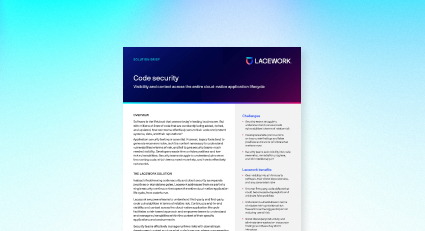Unraveling the intricacies of DevSecOps
Table of contents
What is DevSecOps? Top practices in DevSecOps DevSecOps tools Implementing DevSecOps in cloud-native environments Measuring success in DevSecOps Resources for DevSecOpsDevSecOps, a blended term that stands for Development, Security, and Operations, signifies a software development approach that intertwines security and operations into the development process. This practice is designed to detect and tackle security issues early on in the development process, thereby enhancing the security of the application while concurrently speeding up its delivery.
Understanding DevSecOps: What is DevSecOps?
DevSecOps endorses the integration of security practices throughout the complete software development lifecycle, rather than as a secondary consideration. The core principles of DevSecOps orbit around collaboration, automation, and continuous monitoring.
Collaboration between development, security, and operations teams from the start of the project ensures security considerations are incorporated at every stage of the development process. Automation, a fundamental component of DevSecOps, enables consistent and repeatable security procedures. Tasks such as vulnerability scanning, code analysis, and configuration management can be automated, significantly reducing the risk of security vulnerabilities.
Continuous monitoring is another significant aspect of DevSecOps. It allows organizations to promptly identify and tackle security issues, enabling proactive threat detection and swift response times.
By embracing DevSecOps, organizations can boost their overall security posture, promote faster delivery cycles by streamlining security processes, and foster a culture of shared responsibility for security. This results in improved efficiency and superior outcomes.
Top practices in DevSecOps
DevSecOps emphasizes the integration of security practices into the software development lifecycle. By addressing security early on, organizations can reduce vulnerabilities, mitigate risks, and enhance the overall security of their software products.
Key practices include incorporating security into every stage of the software development lifecycle (SDLC), automation, continuous monitoring, and fostering collaboration between development, security, and operations teams.
By automating security testing and monitoring, organizations can accelerate the development process while maintaining a high level of security. Collaboration ensures that these teams work together from the onset, sharing knowledge and expertise to ensure that security requirements are met.
DevSecOps tools and technologies
Several tools and technologies play a critical role in enabling DevSecOps practices. These include Application Security Testing (AST) tools, Container Security Solutions, and Security Automation and Orchestration (SOAR) platforms.
AST tools are essential for identifying vulnerabilities in applications. They help developers detect and fix security flaws early in the development cycle. Container security solutions provide features like vulnerability scanning, runtime protection, and compliance checks to safeguard containers and their contents. Security automation and orchestration platforms streamline security workflows and enable efficient incident response.
Grasping the significance of DevSecOps is essential for maintaining the safety of cloud workloads. With the implementation of thorough container security strategies, automated compliance tests, and real-time threat identification, organizations can greatly improve their cloud security posture.
Implementing DevSecOps in cloud-native environments
Implementing DevSecOps in cloud-native environments is essential for organizations aiming to ensure the security of their applications and data. This necessitates focusing on container security and Kubernetes orchestration, and securing microservices architecture.
Containers offer a scalable approach to application deployment but also introduce unique security challenges. DevSecOps teams need to focus on securing the container runtime, ensuring secure container image sourcing, and implementing vulnerability scanning and patch management processes. In terms of Kubernetes, security practices should include policies and configurations for securing clusters, network segmentation, and enforcing access controls.
Securing microservices architecture is another critical consideration. DevSecOps teams should focus on securing service-to-service communications, implementing strong authentication and authorization mechanisms, and regularly monitoring microservices for potential vulnerabilities or malicious activities.
Measuring success in DevSecOps
Evaluating success in DevSecOps involves assessing key metrics, establishing continuous improvement and feedback loops, and studying successful case studies. Key metrics include the number of vulnerabilities discovered and resolved, the time taken to remediate security issues, the frequency of security testing, and the percentage of successful code deployments.
Continuous improvement and feedback loops are essential components of a successful DevSecOps strategy. It involves regularly assessing and refining your processes based on feedback from developers, security teams, and other stakeholders. Studying case studies provides insights into how organizations have integrated security into their development pipelines and achieved faster deployment cycles.
Resources for DevSecOps
For those looking to expand their expertise in DevSecOps, a multitude of resources is available to foster a deeper understanding of the field. The offerings include a handpicked selection of books and articles, active involvement in leading DevSecOps conferences, and detailed courses tailored to improve your proficiency in DevSecOps
Our training programs cover a wide range of topics, including secure coding practices, vulnerability management, and security automation. By completing our certification programs, you can validate your expertise in DevSecOps and showcase your commitment to maintaining a secure software development lifecycle.
SOLUTION BRIEF
Lacework code security
See how the Lacework platform allows security to "shift-left" and integrate seamlessly into developer workflows.
Download now
This article was generated using automation technology. It was then edited and fact-checked by Lacework.